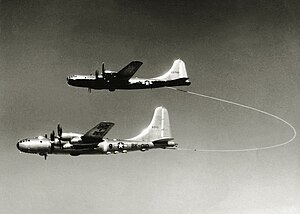
Aerial refueling, also referred to as air refueling, in-flight refueling (IFR), air-to-air refueling (AAR), and tanking, is the process of transferring aviation fuel from one aircraft to another while both aircraft are in flight. The two main refueling systems are probe-and-drogue, which is simpler to adapt to existing aircraft, and the flying boom, which offers faster fuel transfer, but requires a dedicated boom operator station.
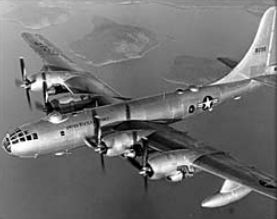
The Boeing B-50 Superfortress is an American strategic bomber. A post–World War II revision of the Boeing B-29 Superfortress, it was fitted with more powerful Pratt & Whitney R-4360 radial engines, stronger structure, a taller tail fin, and other improvements. It was the last piston-engined bomber built by Boeing for the United States Air Force, and was further refined into Boeing's final such design, the prototype B-54. Although not as well known as its direct predecessor, the B-50 was in USAF service for nearly 20 years.

Barksdale Air Force Base is a United States Air Force (USAF) base in Bossier Parish, Louisiana, in northwest Louisiana. Much of the base is within the city limits of Bossier City, Louisiana, along the base's western and northwestern edge. Barksdale AFB occupies more than 22,000 acres (89 km2) east of Bossier City and along the southern edge of Interstate 20. More than 15,000 active-duty and Air Force Reserve Command (AFRC) members serve at Barksdale.
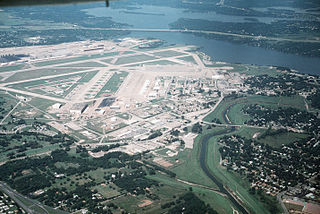
Naval Air Station Joint Reserve Base Fort Worth includes Carswell Field, a military airbase located 5 nautical miles west of the central business district of Fort Worth, in Tarrant County, Texas, United States. This military airfield is operated by the United States Navy Reserve. It is located in the cities of Fort Worth, Westworth Village, and White Settlement in the western part of the Fort Worth urban area.
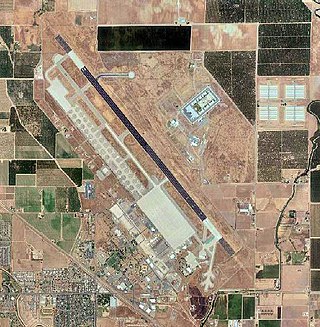
Castle Air Force Base is a former United States Air Force Strategic Air Command base in California, northeast of Atwater, northwest of Merced, and about 115 miles (185 km) south of Sacramento.
Carswell Air Force Base is a former United States Air Force (USAF) base, located northwest of Fort Worth, Texas. For most of its operational lifetime, the base's mission was to train and support heavy strategic bombing groups and wings.
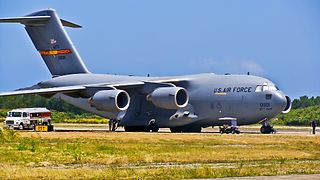
The 97th Air Mobility Wing is a United States Air Force (USAF) unit assigned to Nineteenth Air Force of Air Education and Training Command. It is stationed at Altus Air Force Base, Oklahoma. The wing is also the host unit at Altus. It plans and executes McDonnell Douglas C-17 Globemaster III, Boeing KC-46, and Boeing KC-135 Stratotanker pilot and aircrew training, providing formal school initial and advanced specialty training programs for up to 3,000 students annually. The training is done in a three-phase approach: Academic Phase, Simulator Phase, and Flying Phase.

The 92d Air Refueling Wing is a United States Air Force unit assigned to the Air Mobility Command Eighteenth Air Force. It is stationed at Fairchild Air Force Base, Washington. The wing is also the host unit at Fairchild. The wing carries out air refueling, passenger and cargo airlift, and aero-medical evacuation missions.

The Boeing KB-29 was a modified Boeing B-29 Superfortress for air refueling needs by the USAF. Two primary versions were developed and produced: KB-29M and KB-29P.
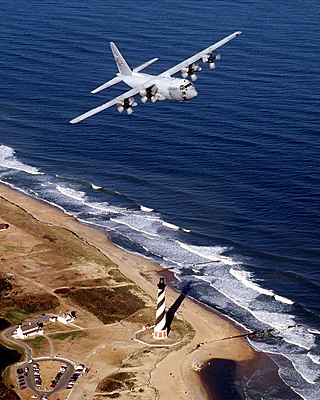
The 43rd Airlift Wing is an inactive United States Air Force unit last stationed at Pope Field, part of Fort Bragg, North Carolina, where it was inactivated in March 2011. The wing performed en route operations support at Pope Field to include mission command & control, aircrew management, aircraft maintenance, aircraft loading, aircraft fueling and supply. Since the wing's inactivation, the 43rd Airlift Group has carried out airlift, maintenance, and base support at Pope Field.

The 319th Reconnaissance Wing is a United States Air Force unit assigned to the Air Combat Command. It is stationed at Grand Forks Air Force Base, North Dakota. The wing is the host unit at Grand Forks.
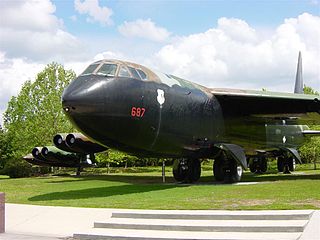
The 306th Strategic Wing, previously the 306th Bombardment Wing, is an inactive United States Air Force unit. It was last assigned to the Strategic Air Command at RAF Mildenhall, Suffolk and was inactivated on 1 February 1992. The wing's mission was to coordinate all SAC air refueling and reconnaissance resources in the European Theater with the United States Air Forces in Europe (USAFE). It assumed the mission of the 98th Strategic Wing when that unit was inactivated in 1976.

The 2nd Air Refueling Squadron, sometimes written as 2d Air Refueling Squadron, is a unit of the United States Air Force. It is part of the 305th Air Mobility Wing at McGuire Air Force Base, part of Joint Base McGuire-Dix-Lakehurst, New Jersey. The 2nd Air Refueling Squadron is the second-oldest squadron in the Air Force, having over 100 years of service to the nation. It was deployed to the Philippines after World War I, during the 1941-1942 Battle of the Philippines, it was wiped out, with the Japanese forcing some of the personnel to endure the Bataan Death March. It was re-formed as an air refueling squadron by Strategic Air Command in 1949. Today, it operates the KC-46 Pegasus aircraft, conducting aerial refueling missions.

The 97th Air Refueling Squadron is an active unit of the United States Air Force, stationed at Fairchild Air Force Base, Washington. It was most recently activated on 1 October 2019 and assigned to the 92nd Operations Group, 92nd Air Refueling Wing.

The 97th Operations Group is a United States Air Force unit assigned to the 97th Air Mobility Wing of Air Education and Training Command. It is stationed at Altus Air Force Base, Oklahoma.

The 41st Expeditionary Air Refueling Squadron is a provisional United States Air Force unit. It was last assigned to the 380th Operations Group at Griffiss Air Force Base, New York, where it was inactivated on 15 February 1993.

The 43d Air Refueling Squadron is an inactive United States Air Force unit. It was last assigned to the 92nd Bombardment Wing, stationed at Fairchild AFB, Washington. It was inactivated in 1995.

The 427th Air Refueling Squadron is an inactive United States Air Force unit. It was last assigned to the 4505th Air Refueling Wing at Langley Air Force Base, Virginia, where it was inactivated on 1 April 1963.

The 429th Air Refueling Squadron is an inactive United States Air Force unit. It was last assigned to the 4505th Air Refueling Wing at Langley Air Force Base, Virginia, where it was inactivated on 8 October 1963.

Operation Power Flite was a United States Air Force mission in which three Boeing B-52 Stratofortresses became the first jet aircraft to circle the world nonstop, when they made the journey in January 1957 in 45 hours and 19 minutes, using in-flight refueling to stay aloft. The mission was intended to demonstrate that the United States had the ability to drop a hydrogen bomb anywhere in the world.
